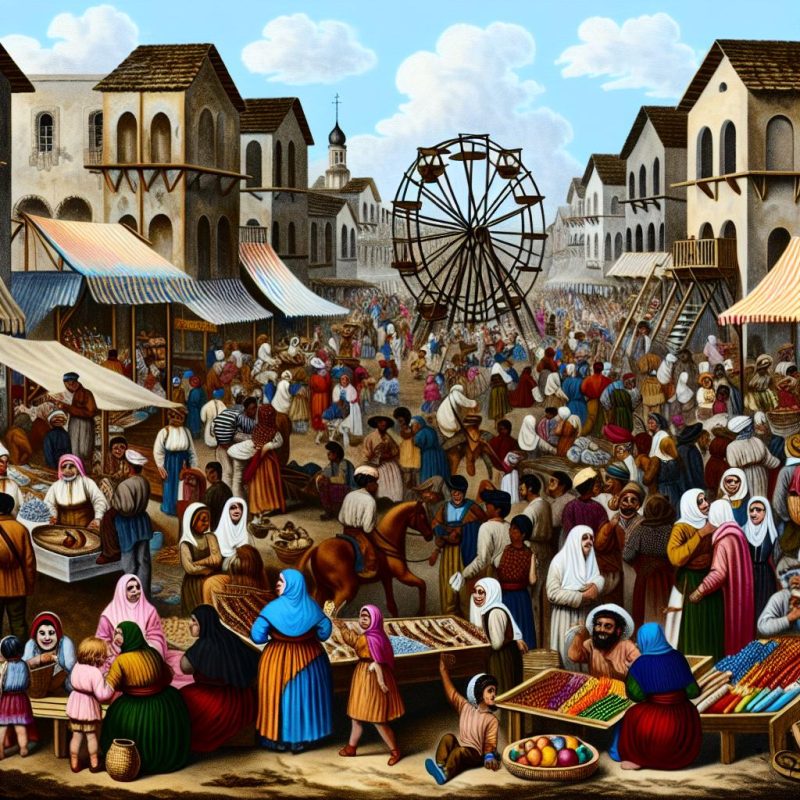Introduction to Historic Fairs and Markets
Fairs and markets have played a pivotal role in the economic and social history of regions around the world. These gatherings have not only fostered trade but also facilitated cultural exchanges, influencing food, language, and traditions. To understand their significance, one must explore their origins, evolution, and enduring impact on societies globally.
The Origins of Historic Markets
Markets have a storied history beginning in ancient times, stemming from agrarian societies that began trading surplus goods. Their evolution marks a significant phase in human history as communities expanded and began exchanging not only goods but also ideas and innovations. The creation of markets went hand in hand with technological advancements in agriculture and transport.
The Development of Market Locations
Marketplaces were strategically located at crossroads or near waterways, facilitating easy access for traders and travelers. These locations ensured the fluid movement of goods and people, becoming hubs of activity that in themselves were crucial for urban development. The layout and location of these markets were pivotal, resembling a modern-day city planning practice where accessibility remains key.
Key Features of Historic Markets
Ancient markets functioned as vibrant centers of economic exchange, offering agricultural products, handmade goods, and livestock. The frequency of these markets was often dictated by local customs or agricultural cycles, aligning them with feast days and religious events. Beyond trade, they were integral to social and political life, offering a venue for public forums where community issues were discussed, news was shared, and social bonds were reinforced.
Examples of Renowned Historic Markets
The Grand Bazaar in Istanbul: With origins dating back to the 15th century, this is one of the world’s most extensive and oldest covered markets. It served as a central trade hub in the region. For more details, explore the Grand Bazaar Wikipedia page.
The Fair of Beaucaire in France: A notable event during the Middle Ages, it drew traders from across Europe, highlighting its importance in the commercial network of the time.
The Frankfurt Fair: Established in the 12th century, this fair became one of the key trading hubs within the Holy Roman Empire, reflecting the economic vitality of the region.
The Impact of Fairs
Fairs, in contrast to regular markets, were generally more occasional and closely tied to religious festivals or key agricultural periods. They offered more than just trade opportunities, acting as centers of cultural activity and entertainment. These gatherings provided a platform for performances, games, and various spectacles, widening the scope of their influence.
Economic and Cultural Dimensions
Economically, fairs offered unique opportunities for bulk trading and the introduction of new products, such as exotic spices, fabrics, and technologies from distant areas. This exchange contributed significantly to economic growth and cultural enrichment, bridging communities in an age where travel was more challenging.
Culturally, fairs were instrumental in spreading ideas and traditions, enhancing mutual understanding and cooperation among diverse populations. The fair’s atmosphere, with its blend of commercial and entertainment activities, promoted interactions among various societal groups, fostering a spirit of camaraderie and shared identity.
Historic Fairs with Cultural Significance
The Leipzig Trade Fair: Known since the Middle Ages, it was pivotal in European trade networks, aiding in the prolific exchange of books and other cultural products. This facilitated scholarly and cultural dissemination on an unprecedented scale.
The Nizhniy Novgorod Fair in Russia: Established in the 16th century, this fair drew traders and visitors from both Asia and Europe, underlining its centrality to cross-continental trade and cultural exchanges.
The Evolution and Influence of Marketplaces
As societies advanced, so did the complexity and reach of their markets and fairs. These institutions evolved to accommodate changing economic landscapes, technological innovations, and cultural dynamics. Historical transitions, such as colonial expansion, industrialization, and the advent of modern transportation, influenced the nature and scope of markets and fairs globally.
The Transition from Local to Global
With technological advancements and increased mobility, markets and fairs evolved from local centers of commerce to engines of global trade. The colonial era introduced new commodities and shifted trade patterns drastically. Industrialization further altered the landscape, with mass production and expanded networks reaching worldwide markets.
Modern-Day Reflections of Historic Practices
Today, many historic markets still serve as vital cultural and economic centers. For instance, the Grand Bazaar continues to attract tourists and traders, reflecting a blend of traditional elements with modern commerce. Similarly, other historic fairs and markets have adapted to contemporary trends, incorporating digital tools and international trade practices while preserving their storied pasts.
Conclusion
Historic fairs and markets have left an indelible mark on the economic, cultural, and social landscapes of their regions. They not only facilitated trade but also acted as melting pots of diverse cultures and ideas, shaping the identities of communities. By examining these vibrant institutions, we gain a deeper appreciation of their contribution to the broader tapestry of human civilization. To delve deeper into this fascinating subject, consider exploring more on market history on Wikipedia.

